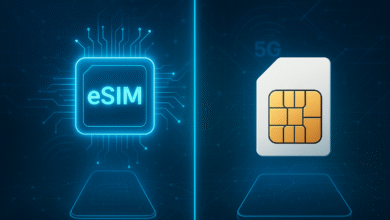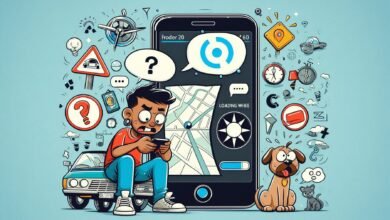
The smartphone industry continues to evolve, and in 2025, the battle between iOS and Android is more intense and sophisticated than ever. These two dominant mobile operating systems power billions of devices worldwide, offering users distinct experiences in terms of performance, security, customization, and ecosystem integration. If you’re considering upgrading or switching platforms this year, understanding the full breakdown of features in both iOS and Android is essential.
This article provides a comprehensive feature-by-feature comparison of iOS vs. Android in 2025. Whether you’re an iPhone loyalist or an Android enthusiast, this guide will help you make an informed decision.
1. User Interface (UI) and User Experience (UX)
iOS 18 has refined its minimalist and consistent user interface to near perfection. Apple’s signature design remains sleek, intuitive, and uniform across all devices. With the introduction of dynamic themes in iOS 18, users can now switch between light, dark, and color-custom themes that adapt based on usage patterns and time of day.
On the other hand, Android 15 takes customization to new heights. Building on Material You, Android’s UI now offers more granular controls for layout, iconography, and animations. You can even design your home screen layout based on AI-driven usage data.
While iOS prioritizes simplicity and uniformity, Android focuses on giving users complete control over their visual experience. The choice comes down to preference: uniform elegance or tailored creativity.
2. Performance and Speed
In 2025, Apple’s A19 Bionic chip is a powerhouse, enabling unmatched performance and battery efficiency. iPhones now leverage advanced neural engines for real-time AI processing, which drastically improves app loading speeds, multitasking, and gaming graphics.
Android devices, particularly those powered by the Qualcomm Snapdragon 8 Gen 4 or Google’s Tensor G4, offer impressive performance as well. These chips introduce ray tracing for mobile gaming, 3D audio, and AI-powered voice recognition capabilities.
That said, iOS maintains a slight edge in real-world performance consistency, largely due to tight hardware-software integration. Android manufacturers offer a wide range of performance tiers, so the experience can vary depending on your specific device.
3. App Ecosystem and Store Policies
The Apple App Store remains highly curated and tightly regulated. This approach ensures app quality, security, and user privacy, though it limits developers in terms of payment processing and customization.
Meanwhile, the Google Play Store continues to offer more freedom and flexibility. Android developers can distribute apps through multiple channels and use alternative billing systems. This has led to a wider selection of apps, including experimental or region-specific ones.
In 2025, iOS has made slight changes due to regulatory pressure, allowing third-party app stores in the EU. Still, Android is seen as the more open platform, while iOS offers a more controlled and secure ecosystem.
4. Privacy and Security
Privacy is one of Apple’s biggest selling points. With iOS 18, features like App Privacy Reports, Private Relay, Face ID upgrades, and on-device processing for Siri emphasize their privacy-first philosophy. iPhones now also support anti-tracking by default for all apps.
Android 15 has made significant strides in this area, introducing Privacy Dashboard 2.0, encrypted app sandboxing, and AI-based threat detection. Additionally, many Android manufacturers, like Samsung and Google, now offer monthly security patches.
Even so, iOS is still widely regarded as more secure out of the box. However, Android gives users more control over app permissions and system modifications, which can be a double-edged sword depending on user expertise.
5. Customization and Personalization
Android has long been the king of customization, and 2025 is no exception. With the Smart Layout Engine, users can automate their home screen configurations, automate UI changes based on routines, and even apply custom firmware without rooting the device.
iOS has evolved in this regard too. Custom lock screens, widgets, and shortcut automation have improved drastically. With iOS 18, Apple now offers interactive widgets and stackable apps—a feature that lets you group frequently used apps in scrollable, smart stacks.
Still, Android wins hands-down in terms of freedom to personalize. iOS has come a long way but remains more rigid compared to Android’s open architecture.
6. Ecosystem and Device Integration
Apple’s ecosystem in 2025 is more seamless than ever. If you own a MacBook, Apple Watch, iPad, and iPhone, the interoperability is nearly flawless. Features like Universal Clipboard, Handoff, AirDrop, and FaceTime continuity make switching between devices effortless.
Android has also improved dramatically here, especially with Google’s Pixel ecosystem, Samsung’s One UI Continuity, and the growing popularity of Chromebooks and Wear OS watches. Android users can now enjoy Nearby Share, multi-device casting, and cross-device task syncing.
However, Apple’s closed-loop system still offers a tighter and more polished integration, while Android’s cross-brand approach gives more flexibility but less consistency across devices.
7. Artificial Intelligence and Automation
AI has taken center stage in 2025. Apple Intelligence, Apple’s native AI system, integrates deeply into iOS 18. It enhances everything from Siri’s conversational skills to real-time photo editing and even writing assistance across apps.
Android, driven by Google Gemini AI, remains more expansive in AI-driven features. From smart replies in Gmail to AI-based voice dictation, automated call screening, and photo organization, Android leverages Google’s AI expertise in every corner of the OS.
In this category, Android leads in terms of AI diversity and depth, while Apple provides a more polished, privacy-respecting AI experience.
8. Updates and Software Longevity
Apple continues to dominate in this area. With iOS 18, even iPhone X models from 2017 still receive updates. The uniform hardware across devices allows Apple to push out simultaneous updates to nearly all supported models.
Android 15 has seen major improvements here too. Google, Samsung, and other major OEMs now offer up to 7 years of OS updates on flagship devices, thanks to Project Mainline and modular system updates.
Still, the fragmentation in the Android ecosystem means that not all devices get timely updates. Apple’s uniform update model remains unmatched in consistency and coverage.
9. Voice Assistants and Smart Services
Siri, now backed by Apple Intelligence, is context-aware and integrated with more apps than ever before. You can ask Siri to edit a photo, summarize an article, or even craft an email with a tone of your choosing.
Google Assistant, however, is still smarter in most scenarios. It supports more languages, understands context better, and integrates with a wider range of smart home devices.
That said, Apple’s focus on privacy and on-device AI processing makes Siri a better choice for users concerned about data security. Google Assistant, meanwhile, is ideal for those who value raw intelligence and versatility.
10. Gaming and Multimedia
Apple has made big strides in gaming with MetalFX and Game Mode, optimizing device resources for smoother performance. The company is now partnering with major studios to bring console-level games to iOS devices.
Android, with ray tracing support and higher display refresh rates on select models, offers a broader spectrum for gamers. Platforms like Google Play Games for PC and Samsung’s Game Booster enhance cross-device gaming and streaming.
For media consumption, Apple’s ecosystem integrates well with Apple TV+, Apple Music, and Spatial Audio. Android users, meanwhile, benefit from YouTube Premium, Google TV, and customizable audio profiles.
Both platforms are solid, but your choice will depend on whether you prefer console-like performance (iOS) or modular, flexible gaming experiences (Android).
11. Battery Life and Charging Technologies
In 2025, Apple’s adaptive battery management system has improved considerably. It learns from user behavior to optimize background processes, and the latest iPhones support MagSafe 3.0 with faster wireless charging and battery health management.
Android phones, depending on the manufacturer, now feature 100W+ fast charging, reverse wireless charging, and AI-powered battery extensions. Google and Samsung offer new thermal control systems to prevent overheating during intensive use.
While Android wins in charging speed and variety, iOS provides a more reliable, long-lasting battery lifespan through smart management.
12. Pricing and Device Variety
One of Android’s biggest advantages is diversity. In 2025, you can find Android devices ranging from budget-friendly $200 phones to ultra-premium foldables and gaming phones exceeding $2,000.
Apple’s lineup remains premium-focused, with fewer models but higher consistency. With the introduction of the iPhone SE 4 and iPhone 17 Ultra, Apple now caters to more pricing segments—but not nearly as broad as Android.
So, if budget and variety are key, Android has more to offer. If quality and brand consistency are your goals, iOS shines.
Final Verdict: Which One Is Right for You?
The iOS vs. Android debate in 2025 is no longer about one being better than the other—it’s about which one fits your lifestyle.
-
Choose iOS if you value privacy, seamless ecosystem integration, consistent updates, and a polished UI.
-
Opt for Android if you prioritize customization, device variety, AI depth, and flexibility.
Ultimately, both platforms are excellent. Your decision should align with your personal preferences, existing devices, and usage priorities.







